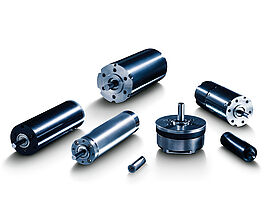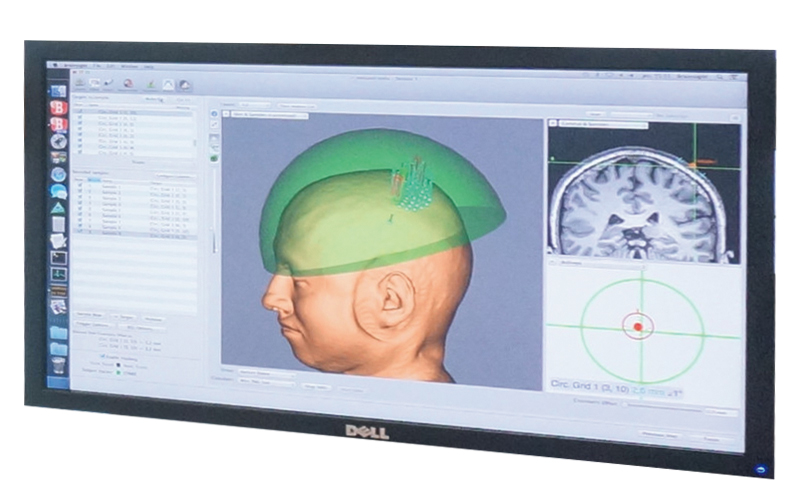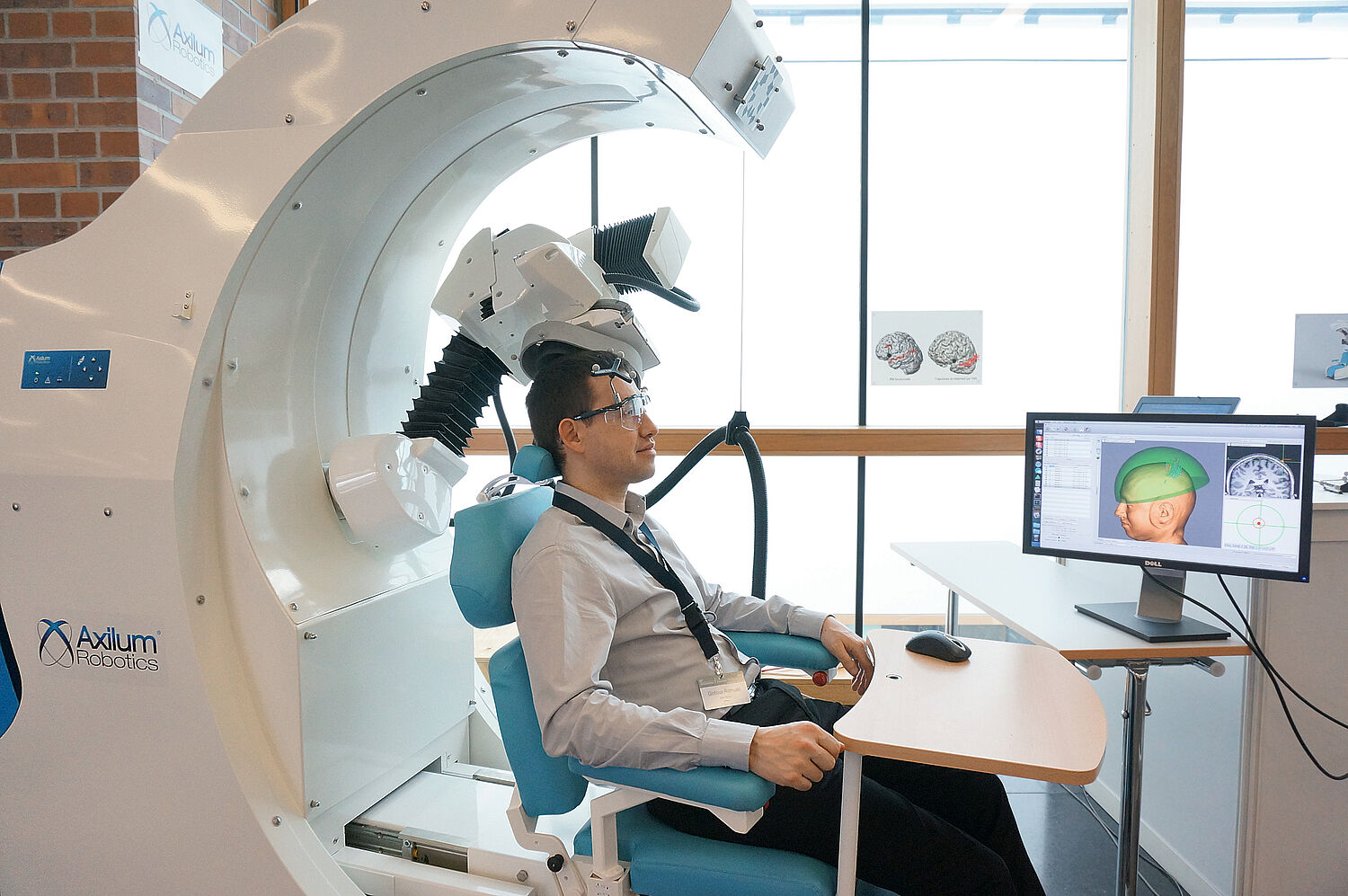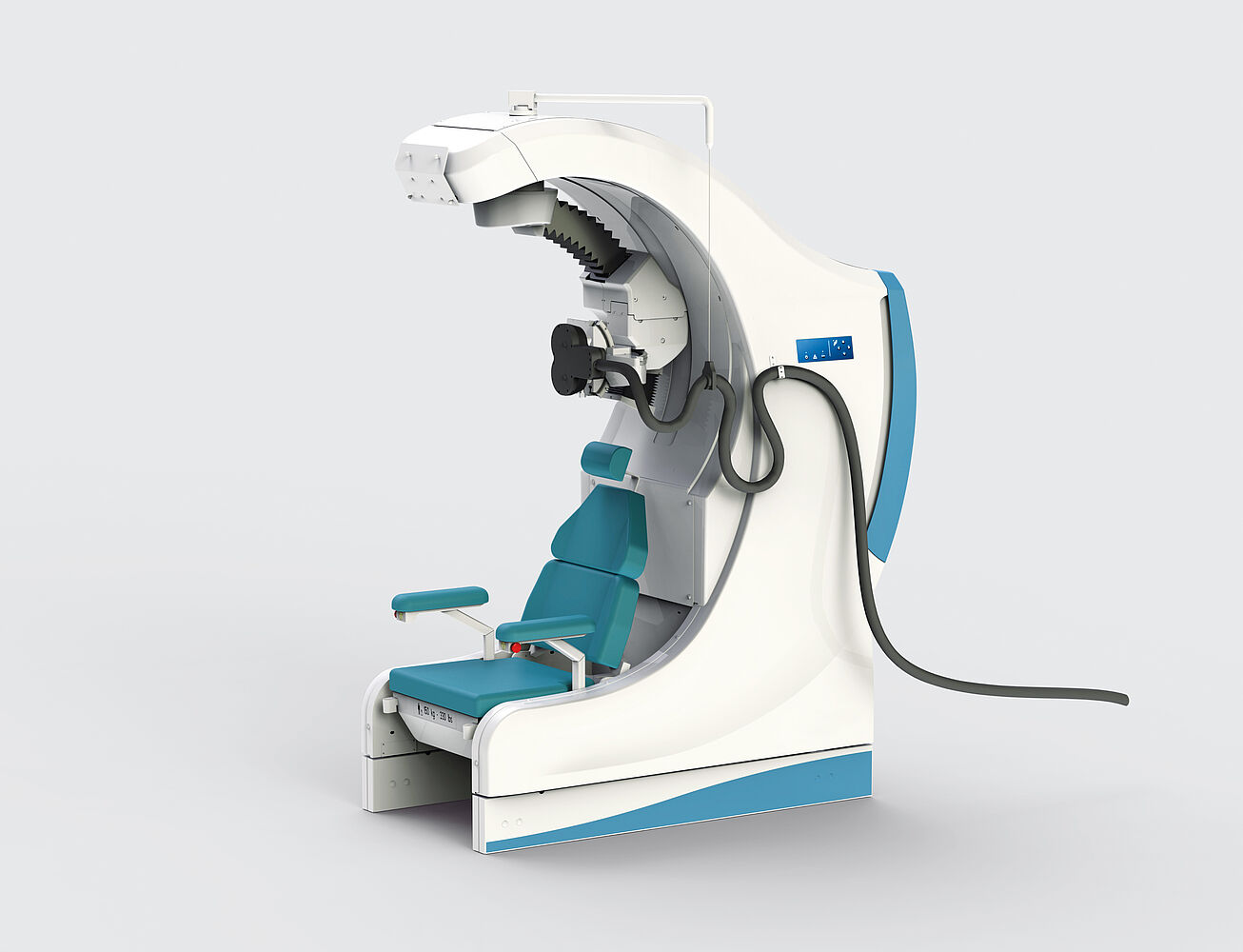Not only is TMS a useful tool in neuroscientific research, it is also used in the diagnosis and treatment of neurological and psychological illnesses, particularly with depression. With this technology, a strong magnetic field is produced in the cerebral cortex. This magnetic field can be used to stimulate or inhibit the electrical activity of the neurons.
The coil that produces the focussed magnetic field must be exactly and reproducibly positioned and directed at the correct points in the brain. With this in mind, the French company Axilum Robotix, together with their partner Streb & Weil, developed the world’s first robotic assistant specifically for TMS. The system positions the TMS coil very precisely and safely on parts of the brain which are specifically defined for each patient in advance. With the goal of producing a compact and precise device, the developers worked together with the application engineers from FAULHABER to create a drive which can achieve highly reproducible positioning through the integration of zero backlash gearheads in the guide arm for the coil.
New medical method
The first transcranial magnetic stimulations were performed by doctor and physicist Jacques-Arsène d’Arsonval at the end of the 19th century at the Collège de France in Paris. At the University of Sheffield, Anthony Barker worked on the modern version of the transcranial magnetic stimulation in 1985. Considerably smaller coils that stimulate only a small region of the cerebral cortex improved the results. Magnetic stimulation of the part of the cortex located near the cranium is today performed with nearly no discomfort for the test subjects or patients. However, the small coils require highly precise positioning of the magnetic field source. The principle is simple: a TMS coil, which is connected to a stimulator, is positioned tangentially on the cranium and delivers a magnetic field with a strength of up to 3 tesla for a few milliseconds. The resulting change in electrical potential in the part of the cortex located near the cranium causes a depolarisation of neurons and the triggering of action potentials. The strength of this electric field decreases exponentially with distance to the coil. This decrease is another reason for placing the coil as close as possible to the brain area that is to be stimulated, i.e., in direct contact with the cranium, without reducing the precision of the positioning.
Compact robot guides the coil
Starting from these requirements, the experts from France developed a robot that can very precisely and reproducibly position the TMS coil around the head of the test subject. The patient sits in a comfortable, electrically adjustable chair with head rest to minimize head movements. The robot is controlled by a neuronavigation system, whereby an optical monitoring system is used to detect and compensate for any head movements. The coil is equipped with a contact sensor and can thereby be safely brought into contact with the cranium.
The hemispherical structure of the robot arm with seven axes guarantees good accessibility. The gearheads and drives are located as close as possible to the axes. The power regulators are also placed very close to the drives to ensure the shortest possible connection to motor and encoder. The power regulators are equipped with shared power supply and bus connection for communication with the control and operating system (central processing unit with processor). In addition, the control and operating system performs safety management for, among other things, emergency stopping as well as all primary control tasks, such as the calculation of the kinematics of the robot arm, position control with the help of the contact sensor, etc.
Due to technical and medical restrictions, the gear motors and their actuators must meet special requirements. The pulsed magnetic fields, which are emitted by the TMS coil, require very high EMC immunity (electromagnetic compatibility) at the height of the robot arm. The electronic unit generally produces only very low emissions in order to keep from interfering with nearby medical devices. The lines must therefore be as short as possible and be shielded to eliminate data errors caused by the therapeutic magnetic fields. Shielding of the cables is also important, as they will otherwise act as antennas and can interfere with other devices. To quickly compensate for head movements, the motors must have a high starting torque and yet not overheat. Encoders with high resolution and gearheads with reduced backlash ensure precise positioning.
In Detail
In practice, the robot specialists use various brushless motors in the arm. These motors are dimensioned so that they can deliver the required torque and still be as small as possible. Consequentially, two 44 mm motors and four 32 mm motors are housed in the robot arm. There is also a 22 mm gear motor consisting of motor and planetary gearhead of appropriate diameter. The small, four-pole motor delivers about 9 W and its encoder generates 1,024 pulses per revolution, thereby yielding a resolution of 4,096 points per revolution. Together with the reduction of the three-stage, planetary gearhead of 86:1, this results in a very high resolution of the rotary movement and enables highly precise coil positioning. The six larger motors deliver 33 or 210 W at the output shaft and are also equipped with high-resolution encoders. Pretensioned, maintenance-free ball bearings ensure a long, backlash-free operating life. In addition to the special requirements of the TMS with regard to safety and compliance with standards, the drives satisfy all conditions for use in the medical sector.
To optimally match the drives to the special conditions, the engineers from Axilum worked closely together with the specialists from FAULHABER. As a result, they were together able to quickly clarify questions regarding electromagnetic compatibility, cable lengths and shielding and integrate special plug connectors. This approach accelerated the development and testing of the TMS robot without needing to make compromises in safety or reliability.
Products




